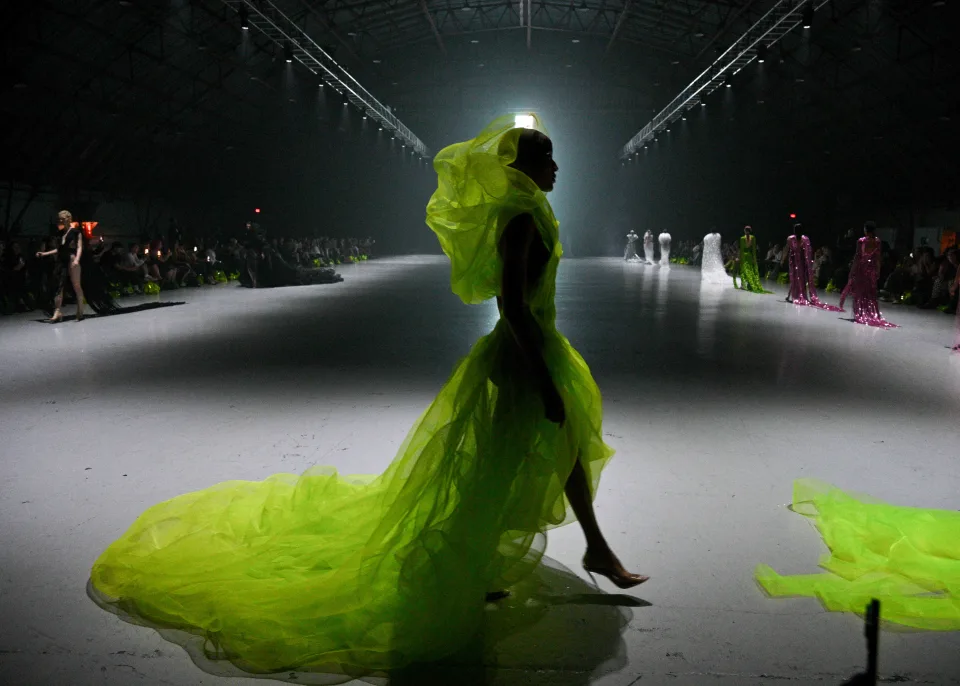Introduction
Los Angeles Fashion Week (LAFW) has steadily risen to prominence as a key player in the global fashion calendar. Known for its laid-back vibe, trendsetting designers, and celebrity culture, LAFW brings a unique perspective to the fashion world. Held twice a year, this event serves as a launchpad for both established and emerging designers, making waves in the fashion industry with a distinctly West Coast flair.

The Origins and Growth of Los Angeles Fashion Week
Los Angeles, a city known for its entertainment industry and cutting-edge style, has long been an incubator for fashion innovation. Los Angeles Fashion Week began in the early 2000s, quickly becoming an integral part of the fashion scene. The city’s relaxed culture and emphasis on inclusivity have influenced the event, making it an open space for experimentation and artistic expression.
The Role of Celebrity Culture
One of the defining characteristics of LAFW is its connection to Hollywood and the entertainment industry. The presence of celebrities, influencers, and actors on the front row adds an element of glamour to the event. Celebrities often work with designers to create exclusive looks, which in turn, boosts the visibility of the collections showcased on the runway.
What Sets LAFW Apart?
Los Angeles Fashion Week offers a distinct contrast to its East Coast counterpart, New York Fashion Week. While NYFW is known for its high-stakes, business-driven atmosphere, LAFW is more relaxed and approachable, reflecting the laid-back California lifestyle. LAFW often embraces more casual, streetwear-inspired collections that blend comfort with style.
The Influence of Streetwear and Urban Culture
LAFW has become a hotbed for streetwear and urban fashion. Designers often draw inspiration from the city’s diverse cultural landscape, blending contemporary street style with high-fashion elements. This fusion has given rise to a new wave of fashion that resonates with younger audiences, making LAFW a must-see event for anyone interested in the future of fashion.
Inclusivity and Diversity
Another hallmark of LAFW is its commitment to inclusivity and diversity. From the models on the runway to the designers themselves, LAFW embraces a wide range of backgrounds, ethnicities, and body types. This inclusivity makes the event feel more accessible, allowing a broader audience to feel represented and connected to the fashion being presented.
Los Angeles Fashion Week and Sustainability
In recent years, sustainability has become a key theme at LAFW. As the fashion industry grapples with its environmental impact, designers in Los Angeles have led the way in promoting sustainable fashion practices. Many designers use eco-friendly materials, adopt ethical production methods, and support slow fashion as part of their collections.
Eco-Friendly Fashion and Materials
Designers at LAFW are increasingly focusing on using organic, recycled, and upcycled materials in their collections. This commitment to eco-conscious fashion is part of a larger movement to combat the environmental damage caused by fast fashion. By prioritizing sustainability, LAFW is helping to drive positive change in the fashion industry.
Celebrity Influence and Red Carpet Fashion
Los Angeles Fashion Week benefits significantly from the city’s close ties to Hollywood and the entertainment industry. Designers often dress celebrities for major events like the Oscars, Grammys, and Met Gala, and LAFW is a key space for showcasing these looks. Red carpet fashion from LAFW frequently influences trends seen on the world’s most famous celebrities, cementing the event’s place in global fashion culture.
Branding and Visibility for Designers
For many designers, LAFW is not just an opportunity to showcase their latest collections but also a chance to build their brand. The event draws attention from media outlets, fashion buyers, and influencers, helping designers gain visibility and credibility in the competitive fashion world. The exposure at LAFW can lead to international recognition, catapulting designers into the spotlight.
Challenges and the Future of LAFW
While Los Angeles Fashion Week continues to grow, it faces challenges, such as competing with more established events like New York and Paris Fashion Week. However, the West Coast vibe, emphasis on sustainability, and deep ties to celebrity culture continue to give LAFW its unique appeal.
The Role of Technology
As technology becomes increasingly integrated into fashion, LAFW is embracing digital innovations. Virtual runway shows, digital collections, and online platforms have allowed the event to reach a global audience beyond the physical venue. This embrace of technology may shape the future of LAFW, allowing it to continue to grow and evolve.
Conclusion
Los Angeles Fashion Week has earned its place on the global fashion calendar as a unique celebration of creativity, diversity, and innovation. With its emphasis on streetwear, sustainability, and celebrity culture, LAFW has redefined what it means to showcase fashion in the modern era. As the event continues to evolve, it will undoubtedly remain a key player in shaping the future of fashion.